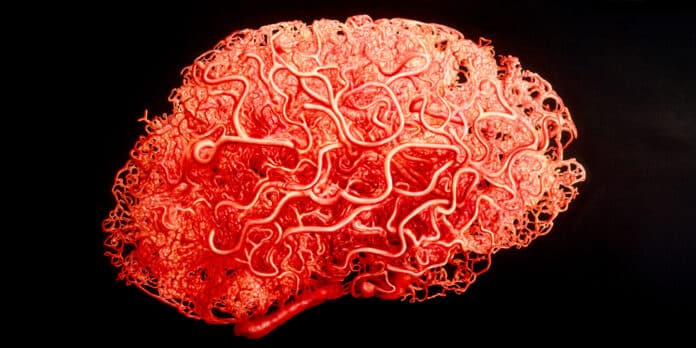Brain tumors are hard to treat with medication. Even if effective drugs are available, they have severe side effects because they circulate throughout the brain and not just the area they are meant to treat.
Given this situation, researchers are optimistic about the potential for a more precise method of delivering medications to specific locations. They are developing miniature transporters designed to navigate through the intricate network of blood vessels.
A team of researchers from ETH Zurich, the University of Zurich, and the University Hospital Zurich has achieved a significant breakthrough. They successfully guided microvehicles through the blood vessels in an animal’s brain using ultrasound. This accomplishment opens up new possibilities for delivering medications with greater precision, especially in challenging environments like the intricate blood vessels of the brain.
In creating their microvehicle, scientists utilized microbubbles filled with gas and coated in lipids. Lipids are the same substances found in biological cell membranes. These microbubbles, with a diameter of 1.5 micrometers, are commonly employed as contrast agents in ultrasound imaging.
The scientists demonstrated that these microbubbles can be effectively guided through blood vessels. This development showcases the potential of using such microvehicles for targeted delivery within the complex network of blood vessels, presenting new opportunities for medical applications, especially in the field of ultrasound-guided interventions.
Recently, scientists have been developing a technique to guide microbubbles through narrow blood vessels. Scientists have successfully tested this method on the blood vessels in the brains of mice. The scientists injected the bubbles into the mice’s circulatory system, where they naturally flowed along with the bloodstream.
However, using ultrasound, the scientists were able to manipulate the microbubbles, holding them in place and guiding them through the brain vessels against the normal blood flow. Remarkably, they could direct the bubbles through complex and winding blood vessels, making them change direction multiple times to navigate into the narrowest branches of the bloodstream.
To control the movements of the microvehicles inside the mice’s brains, the researchers attached four small transducers to the outside of each mouse’s skull. These devices produce ultrasonic vibrations that create waves spreading through the brain. The waves from different transducers can amplify or cancel each other in specific brain areas. The scientists finely tune the output of each transducer in a sophisticated manner to guide the microbubbles. They can visualize and monitor the direction of the bubbles in real time through imaging.
For the imaging in this study, the scientists utilized a technique called two-photon microscopy. Looking ahead, they aim to use ultrasound for imaging and plan to improve ultrasound technology for this purpose. This approach demonstrates precise control over microvehicles in complex biological environments and showcases the potential for advancing imaging techniques for better monitoring and guidance in future applications.
Journal Reference:
- Del Campo Fonseca A, Glück C, Droux J, Ferry Y, Frei C, Wegener S, Weber B, El Amki M, Ahmed D: Ultrasound trapping and navigation of microrobots in the mouse brain vasculature. Nature Communications 2023, 14: 5889, DOI: 10.1038/s41467-023-41557-3
